#McKim Building
Photo
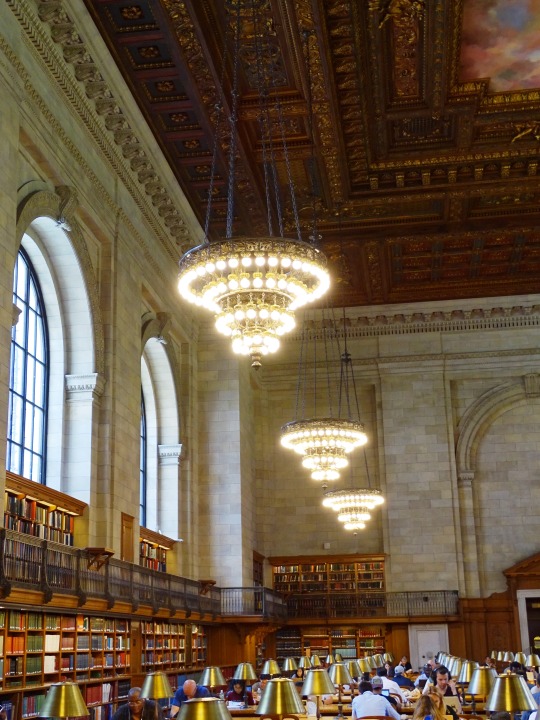
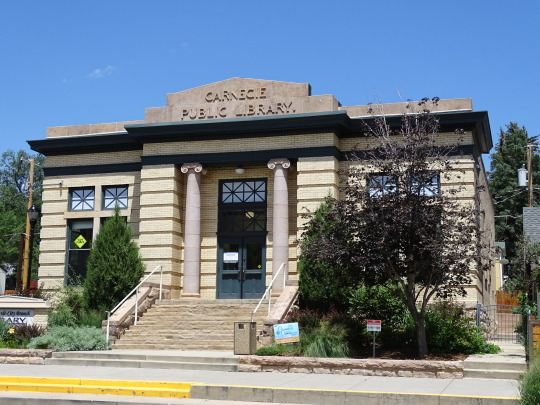
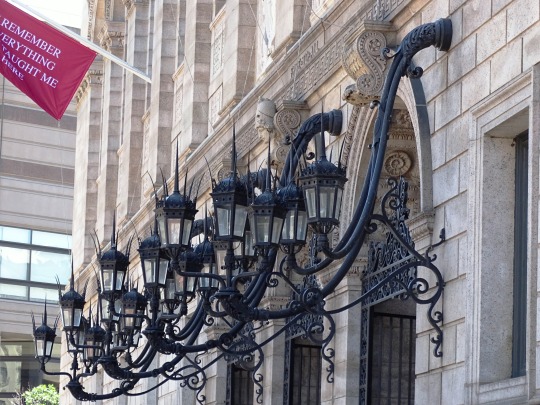
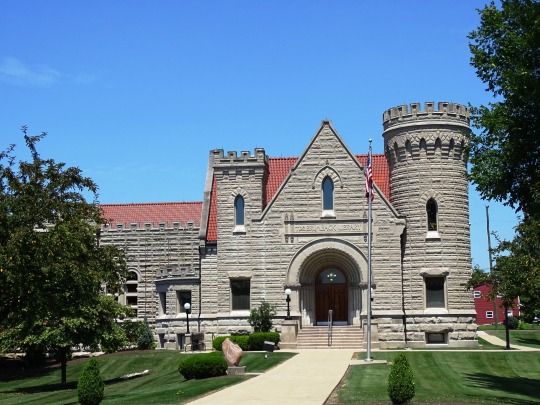
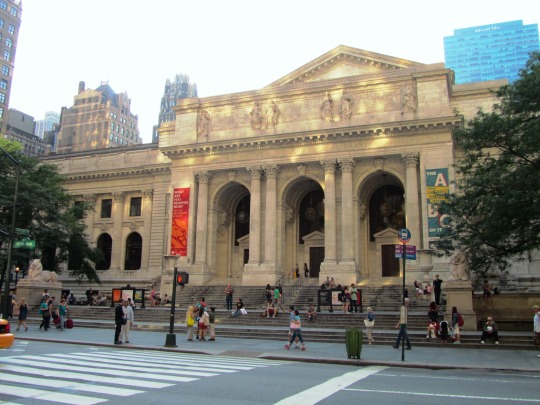
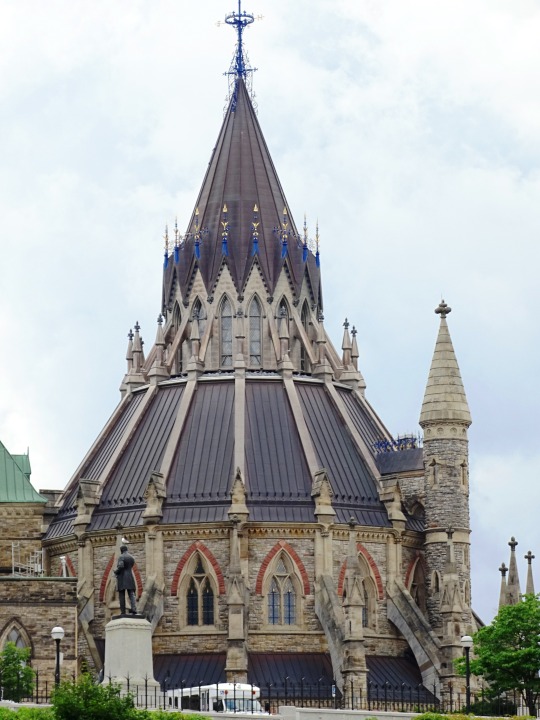


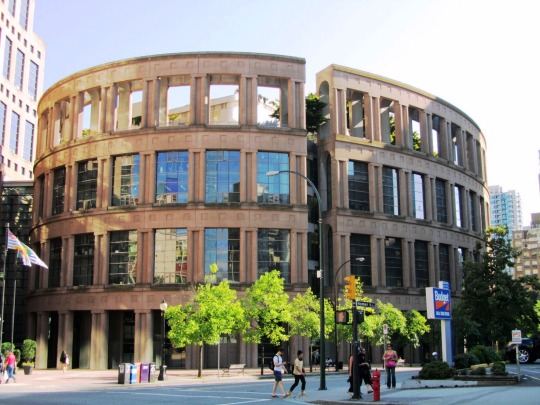

Bibliomania Day
Stephen Blumberg loved books. It has been written that “it was his habit to read constantly through the night, cat-napping, walking, reading, dozing, waking, reading again, never fully sleeping.” Stephen Blumberg didn’t just love books, he was a bibliomaniac. Bibliomania is when someone has a strong love of books, where they collect them to the point of hoarding, and social relations and health may suffer. Symptoms may include acquiring more books than would be useful for any reason or getting many copies of the same book. The term was coined by John Ferriar, who published a poem in 1809 with the word as its title, for his friend Richard Heber, who had the condition. The term became used to describe obsessive book collectors. That same year, Reverend Thomas Frognall Dibdin published Bibliomania; or Book Madness. Bibliomania is different from bibliophilia, which is a healthy form of love for books.
On March 20, 1990, Stephen Blumberg’s bibliomania caught up with him. He was arrested for stealing more than 23,600 books (weighing 19 tons) from 268 libraries, universities, and museums. It had taken him over 20 years to steal them, and he got them from 45 states, Washington D.C., and Canada. After originally being thought to be valued at around $20 million, the value of the books was estimated at $5.3 million. He is known as the number one book thief in American history and became known as the Book Bandit. The books he stole, which included a first edition of Uncle Tom’s Cabin among other rare books, became known as the “Blumberg Collection.”
An acquaintance of Blumberg, Kenneth J. Rhodes, turned him in for a $56,000 reward. During Blumberg’s trial, a psychiatric doctor let it be known that Blumberg had gone through psychiatric treatment as an adolescent. The defense claimed that Blumberg had stolen the books because of psychiatric issues beyond his control. According to the defense, Blumberg had thought he was saving the books from destruction by stealing them. He thought that the government was trying to keep them so that everyday people wouldn’t have them, and he thought he was acting as custodian of the books and doing something good. Because he was well-intentioned, he said he would have never sold any of the books for a profit, and hoped they would go to another person who would take good care of them after he was gone. Nonetheless, he was sentenced to 71 months in prison and given a $200,000 fine, and insanity or psychology wasn’t factored into the decision. He was released on December 29, 1995, and has since been arrested for burglary multiple times.
On Bibliomania Day, we remember Stephen Blumberg and his remarkable feat of stealing over 23,600 books. Could you buy, steal, or gather together that many books? Probably not, but you aren’t the world’s most famous bibliomaniac. Perhaps on Bibliomania Day, you could at least try.
How to Observe
Celebrate the day by getting as many books as possible. It’s probably best not to steal them as Stephen Blumberg did, but that’s a decision you will have to make for yourself. You could start by getting some books about bibliomaniacs, such as A Gentle Madness: Bibliophiles, Bibliomanes, and the Eternal Passion for Books or The Man Who Loved Books Too Much: The True Story of a Thief, a Detective, and a World of Literary Obsession. After that your options are limitless. As bibliomaniacs tend to collect any and all books, regardless of their value, you could just start trying to gather up any books you can find. But maybe it’s best to start by getting some of the best fiction or non-fiction books of all time.
Source
#Brumback Library#Van Wert#Rose Main Reading Room#Midtown Manhattan#New York City#Stephen A. Schwarzman Building#Library of Parliament#USA#Ottawa#Old Colorado City Branch Carnegie Library#Colorado Springs#Boston Public Library#McKim Building#Adams County Public Library#Gettysburg#Harold Washington Library Center#Chicago#Canada#Vancouver Public Library#Bibliomania Day#20 March#BibliomaniaDay#architecture#cityscape#original photography
4 notes
·
View notes
Text

The grandeur that was Penn Station, 1929.
Photo: Drahomir Josef Ruzicka via Photography & Vision
#vintage New York#1920s#Pennsylvania Station#Drahomir Josef Ruzicka#Penn Station#lost buildings#vanished New York#Beaux Arts#b&w photography#McKim Mead & White#Beaux Arts style#criminal destruction
362 notes
·
View notes
Photo

27 Classic Walt Disney Animation Studios Shorts To Be Added On Disney+ Trought July - October
Disney is finally opening up the vault to celebrate the Disney 100th celebrations, as Disney has announced that over 28 newly restored Walt Disney Animation Studios classic shorts will be coming soon to Disney+ around the world.
Starting on July 7th a new collection of shorts, featuring such iconic stars as Mickey and Minnie Mouse, Donald Duck, Goofy, Pluto, Chip n’ Dale, and the studio’s first star, Oswald the Lucky Rabbit will be released from July to October.
July 7th
-AQUAMANIA (1961)
-BATH DAY (1946)
-BUILDING A BUILDING (1933)
-FIGARO AND FRANKIE (1947)
-GOOFY GYMNASTICS (1949)
-THE SKELETON DANCE (1929)
AUGUST 11TH
-BARNYARD OLYMPICS (1932)
-DONALD’S COUSIN GUS (1939)
-DONALD’S NEPHEWS (1938)
-THE FLYING JALOPY (1943)
-GOOFY AND WILBUR (1939)
-MICKEY’S STEAM ROLLER (1934)3620
SEPTEMBER 5TH - SEPTEMBER 8TH
-OSWALD THE LUCKY RABBIT - TROLLEY TROUBLES (1927
-OSWALD THE LUCKY RABBIT - ALL WET (1927)
-BONE TROUBLE (1940)
-MERBABIES (1938)
-MICKEY’S KANGAROO (1935)
-PLAYFUL PLUTO (1934)
-PLUTO, JUNIOR (1942)
-THE BARN DANCE (1929)
OCTOBER 6TH
-CAMPING OUT (1934)
-CHIPS AHOY (1956)
-FIDDLING AROUND (1930)
-INFERIOR DECORATOR (1948)
-OLD MacDONALD DUCK (1941)
-WHEN THE CAT’S AWAY (1929)
-WYNKEN, BLYNKEN AND NOD (1938)
The restorations were spearheaded by Walt Disney Studios Restoration and Preservation team, led by director Kevin Schaeffer, working in close collaboration with creative advisors from Walt Disney Animation Studios “We are thrilled to be working with Kevin Schaeffer and the Studio’s restoration team in presenting these beautifully restored versions of classic Disney animated shorts. Two of our top artistic talents have lent their expertise and passion to the project to make sure that the films look their very best, and are authentic to the creative intentions of the original filmmakers. We’re very excited to be sharing these wonderful shorts with the Disney+ audience. They have never looked or sounded better.” -- Dorothy McKim
#Walt Disney Animation Studios#WDAS#Oswald The Lucky Rabbit#Mickey Mouse#Chip And Dale#Chip N Dale#Pluto#Donald Duck#Goofy#Silly Symphonies#Disney+#Disney Plus
52 notes
·
View notes
Text

McKim, Mead and White. Wheatly, 1890–1900. Old Westbury, NY.
The Fruits of Capitalism
After the First World War, the first historians of American architecture attempted to determine just what the American spirit in its architecture was, and if the classicism of the 1890s had contributed to or hindered its expression. In his Story of Architecture in America (1927), Thomas Tallmadge made the dilemma clear, for while he respected McKim greatly, Tallmadge had practiced in Chicago and knew Sullivan and Wright personally, and therefore could write as a participant in the development of Chicago's "commercial style" and Wright's "Prairie Style." He entitled his ninth chapter "Louis Sullivan and the Lost Cause," not because he thought Sullivan or Wright had been wrong, but because what they had propounded was at variance with what the American and especially the midwestern public wanted. Neither architect had developed (up to the time Tallmadge wrote) a base broad or deep enough to carry the Chicago work forward into the 1920s.
In his later Architecture in Old Chicago (1941) he observed: "An artist's reputation with posterity depends on the vividness of his personality, on the power and popularity of his work, and most of all on the influence he wielded on his contemporaries and on his successors. If his power was so great that he changed . . . the course of architecture, creating a new expression which the people accepted, then he becomes one of the immortals. The men who have done this in America are Thomas Jefferson, Benjamin Latrobe, H. H. Richardson, Charles F. McKim, and Louis Sullivan."
It was Fiske Kimball, however, who went to the heart of the problem then beginning to cloud understanding of "Academic" architecture. In his American Architecture (1928), he defined two poles of modernism: the love of science and respect for abstract form. Kimball drew a parallel between Sullivan's architecture and "realism" in nineteenth-century painting and literature, all of which "emphasized the novel element in modern life rather than its continuity with the past." The counterpart to this was a movement to restore the supremacy of abstract form, centered in New York and led by McKim, Mead & White. By viewing this as a conflict in "an interpretation of architecture . . . in terms of mass and space" and an alternate interpretation of architecture as a "realistic" expression of structure, Kimball avoided questions of style and the idea of "classicism," already in 1928 becoming a pejorative term. He was correct, for to McKim and White it was far more than a matter of which style, but a question of a building's responsibilities to revealing internal functions or augmenting the larger context. For them, context and abstract form always were the determining factors. By 1900 the drive toward abstraction was in ascendancy, and, as Kimball notes, "McKim and his followers went on from triumph to triumph, finding in the early buildings of the Republic a supporting tradition and a national sanction." McKim's followers, those practicing as Kimball and his colleagues wrote, faced a quandary, for it appeared that "the great problems of our time have been attacked and solved with such perfect conformity to 'classical' ideals that little room is left for further creative effort." So, Kimball realized, "the disciples of McKim are condemned to ring the changes on the models already established. These tend to harden into formulae, sometimes relived in their application by subtle restudy of proportion and detail."
Within a few years of the appearance of Kimball's book, of course, opinions changed, so that functional "realism" in architecture came to be preferred to "abstract form." European progressives and radicals during the 1920s had been fascinated with the "realism" of Sullivan's buildings, seeing in them the realization of the realism advocated by Semper, Choisy, and Viollet-le-Duc. This led to the apotheosis of structural action, mechanical function, and industrial process, in the service of social reform, that shaped the early work of Gropius and Mies van der Rohe. Once this utilitarian-social theory was developed, it made "Academic" or "Beaux-Arts" architecture appear fallacious, since structural action was hidden and the building process was not pointedly celebrated. To this then was added a Marxist stigma, for it was the fruit of capitalism. "Our imperial architecture," wrote Lewis Mumford in 1924, "is an architecture of compensation: it provides grandiloquent stones for people who have been deprived of bread and sunlight and all that keeps men from becoming vile." Architecture, according to the new definition, was simply to be an envelope, sheltering the most forthright and structurally rational way essential environmental and physical needs. Richly ornamented public buildings were adjudged "imperious" and, ipso facto, oppressive. The groundwork for the popular notion of the "anti-monument" was laid.
It might be supposed that turn-of-the-century classicism would have been readily subjected to Veblenian analysis, but surprisingly few charges of "conspicuous consumption" were leveled at such public architecture even late into the 1920s. Later, when it was examined from a Marxist point of view, it was noted by Michael Klare that while such architects as McKim, Mead & White built for the wealthiest of capitalists, what they built for the most were pubic buildings generated by the strongest expression of richesse oblige the nation had yet seen. To a degree, this outpouring of hospitals, sanatoriums, museums, libraries, schools, and even entire colleges and universities, compensated for the slow progress of municipalities in providing such services. As Klare observed, one might say such buildings as Carnegie's hundreds of small libraries were undertaken to assuage guilt, reduce proletarian discontent, or effect something of a redistribution of wealth. The reason most cited by the participants, however, was to raise the standard of general intelligence, so that such architecture was judged by its donors not according to its utility merely but for its capacity to inculcate morals and social values. Consequently, buildings for institutions were regarded as vehicles for social symbolism, and this virtually required the return to an allegorical language in architecture and its attendant figural sculpture. This was precisely the reason given by McKim for using the Renaissance idiom for the New York State Building at the Columbian Exposition, for in usch architecture "the use of Allegory and Symbol is possible."
In his autobiography Louis Sullivan asserted that such classicizing allegory was alien to the American spirit and had been forced on a duped public. When the Autobiography of an Idea appeared in 1924, Mumford shared this view, and soon he was joined by Henry-Russell Hitchcock and Philip Johnson in proselytizing for the bare European modernism that was supposedly entirely sachlich ["objective"] and culture free. In 1936, Hitchcock presented the work of H. H. Richardson as leading the way to modernism, tending to dismiss any positive impact McKim or White may have had on their teacher; he believed that on leaving Richardson in 1878 White "left the position of a one-eyed minister to become king among the blind." The general acceptance of the "International Style," as Hitchcock and Johnson christened it, was reinforced by recurrent attacks on pictorial formal design during the 1940s, as in Siegfried Giedion's Space, Time and Architecture (1941), which claimed that the academics had contributed absolutely nothing to the Columbian Exposition. In 1947 James Marston Fitch wrote how Sullivan's ideals had been betrayed by the substitution of the classical architecture of the "Wall Street autocracy," and that after the Columbian Exposition "American architecture was undermined by the most dangerous reaction since its birth." The complete shift in public opinion was signaled by John Kouwenhoven's pronouncement in 1948 that "the work of men like McKim . . . had less relation to the vital contemporary forces of American life . . . than even the crudest, least ingratiating examples of small-town dwellings or the most materialistically functional office buildings."
Then, unexpectedly, following the Second World War, when the utilitarian doctrine was fully embraced by the public, the theorists and critics who had propounded the theory in the twenties and thirties began to change their position, calling for a return to monumental formalism in the new architecture required in devastated Europe, for an architecture of dignity and fundamental emotional impact, an architecture representing ceremonial life, going beyond mere functional fulfillment and expressing "aspirations for joy, for luxury, and for excitement." What was needed now were buildings which could not be justified at all by sheer necessity. Conversely, postwar public opinion had now been conditioned to support the wholesale demolition of Beaux-Arts buildings across the country, even though the qualities they incorporated were precisely those being advocated by the critics. In his encyclopedic Architecture: Nineteenth and Twentieth Centuries (1958), Hitchcock presented a view of traditionalist academic architecture just the reverse of that in his study of Richardson. McKim, Mead & White, in their Boston Public Library, were described as not refuting what Richardson had done but in fact pursuing a course he had already sketched out. Traditional or academic architecture was not meretricious or nonfunctional, as we had earlier been told to believe, nor was it to be dismissed with derision; it was simply necessary to evalyuate it by the humanist standards of the nineteenth century rather than utilitarian standards of the twentieth.
Vincent Scully's Shingle Style (1955) marked the beginning of a genuinely positive view of at least the firm's summer and country houses. And Philip Johnson evven went so far as to suggest the following year that "McKim of New York, in his Boston Public Library, contemporaneously with Sullivan, erected a design far purer, and much more inspiring to look at (at least for me), than nine-tenths of Sullivan's buildings." When the new editions of Hitchcock's Richardson and Fitch's American Architecture were published in the 9160s, the original pejorative passages were qualified, toned down, or stricken out altogether. . . .
. . . So, by 1980, the course of critical and popular perception of the work of the firm had come nearly full circle, approximating something of what it had been three quarters of a century before: first, the firm could do no wrong; then they could do no right; now they are seen as having built a remarkable number of astoundingly good buildings which warrant closer study.
—Leland M. Roth (1943–). McKim, Mead & White, Architects, 1983.
In my opinion Roth misrepresents Mies, whose work begins and ends with formal considerations and who never gave more than perfunctory lip service to "function," and that only in his earliest days. The passage is otherwise invaluable for tracing the path of opinion regarding an American architectural firm of great historic merit.
6 notes
·
View notes
Text
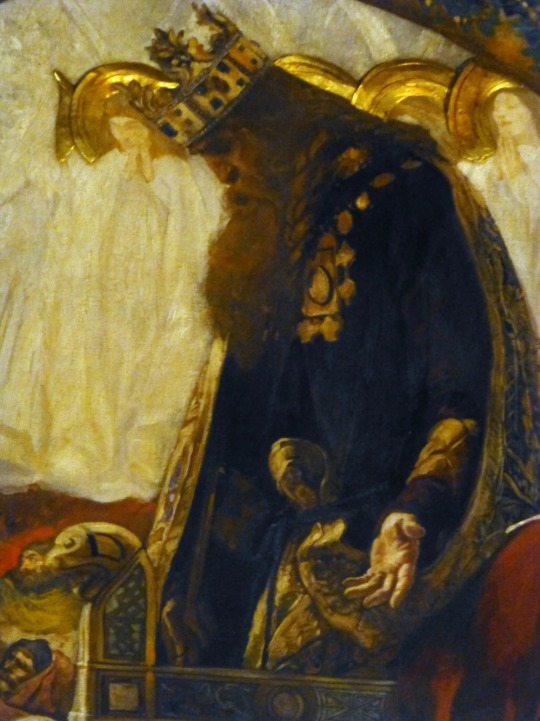
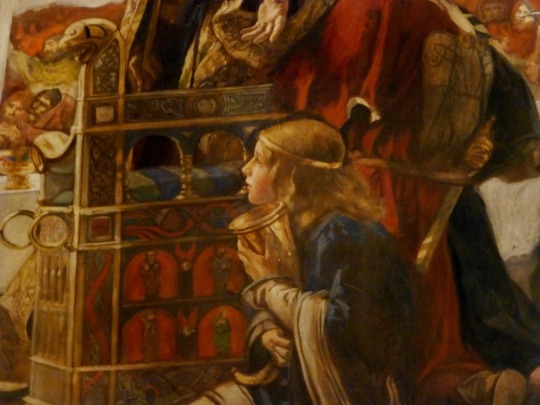

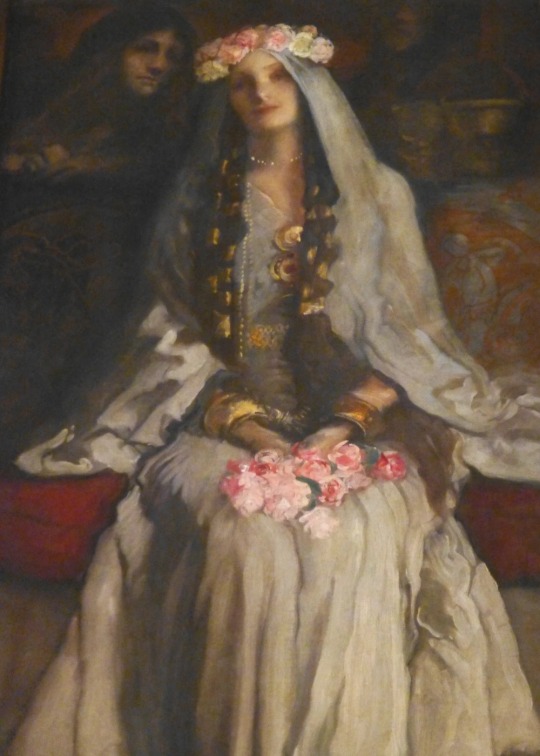

The images above are details from ‘The Quest And Achievement of the Holy Grail’ set of murals by Edwin Austin Abbey which adorn the Boston Public Library.
#The Quest And Achievement of the Holy Grail#heart & soul#art for art's sake#arthurian mythology#boston public library#Edward Austin Abbey#art and soul#imagika#beauty in the detail
2 notes
·
View notes
Note
Hi!! 7, 22, 30 & 52 for any ship you want to talk about, for the otp ask💜
several ships it is! :D
7. Would they build a pillow fort together just because?
I think the only ones who would build a pillow fort together (or at least bc they’re both independently interested in a pillow fort) are Del and Felix. It would probably be hella elaborate, too, since Del’s background is in engineering. She absolutely draws pillow fort schematics.
As far as who would build a pillow fort and bully their partner into joining them? Petra. Petra has totally built a pillow fort and made Ava participate. I imagine the conversation goes something like this:
“If you’re gonna be my girlfriend, you have to do girlfriend things.”
“And building a makeshift tent in your living room constitutes ‘girlfriend things’?”
“Fort. And yes, that’s like, girlfriend things 101.”
“This does not remotely resemble a fort.”
“O-kay, if you’re so well-versed in forts then you build it.”
(in case it’s not super obvious, Ava builds her a pillow fort. And takes it way too seriously.)
22. What reminds each of their partner?
I’m gonna do this one for Leila and Morgan.
Something that reminds Morgan of Leila:
the scent of murphy’s (lol) oil soap. Leila uses it to clean her paintbrushes — she almost always has a few freshly washed ones out to dry, so her kitchen often smells faintly of that soap. So really just the diluted smell of oranges, I guess, since that’s largely what the soap smells like.
Something that reminds Leila of Morgan:
the stars. especially during all those weeks she stayed at the warehouse, whenever she couldn’t sleep (not infrequent, unfortunately), she’d end up hanging out on the roof with Morgan, sometimes talking, sometimes not. so she spent a fair amount of time staring at the night sky. and, because Leila is nothing if not a hopeless romantic at heart, she started thinking about the shared qualities between Morgan and the night sky — a little mysterious, bright in spots because of the sharp contrast of the surrounding dark, and something that offers her a sense of calm and tranquility.
30. Your OTP gets to pick out each other's outfits; what is each wearing?
Okay, I can’t resist doing this for Wren and Julia because I feel like they would both kinda be dicks about it. Like, Ortega would be thrilled for the opportunity to get Wren to wear something that a) isn’t at least three sizes too big and b) doesn’t look like she stole it from a lost-and-found box. Conversely, Wren would either take advantage of the chance to get Julia to wear something that doesn’t cost more than her rent OR would offer her like, orthopedic shoes while making a joke about them being appropriate for Ortega’s advanced age. (Their love language is just being affectionate assholes to each other, honestly.)
52. Describe their weekend getaway?
Aaaand I’ll do this one for Holland and Nate bc I’ve actually had this headcanon idea kicking around for awhile and I don’t think I’ve ever talked about it on here! We’re also making it a long weekend, because I can (and because travel time).
For background: Holland lived in Boston for college and grad school (she may have been postponing moving back to Wayhaven just a bit), and she really loved it. So, at some point, she would absolutely want to take Nate for a tour of her favorite places. I’m thinking:
catching the commuter rail to Providence one afternoon/evening for Waterfire
wandering around mt auburn cemetery
the mckim building at the boston public library (because it’s pretty, but also bc Holland would want to take Nate to the map room tea lounge)
walking along the charles
Also, Boston has SO many cool museums and Walden Pond is nearby, so I think it’s a weekend trip that Nate would enjoy for more than just the Holland Lore (tm).
otp asks
#tysm for the ask! <3#(and sorry it took a mo to answer!!)#once again i let myself get carried away with these#oc: wren adler#oc: leila ghazdari#oc: petra carlisle#oc: holland townsend#oc: delaney keaton#ship: you were my town#ship: you chose me#ship: invade my space#ship: your entire heart#ship: a light in the dark#(jfc this is so many ship/oc tags asfkjsdf)#answered#sustainably-du-mortain
3 notes
·
View notes
Photo
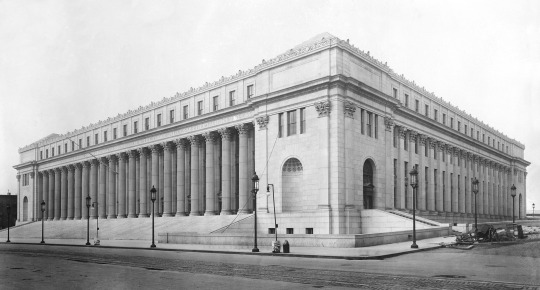
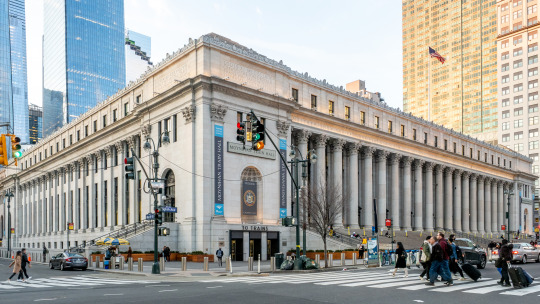

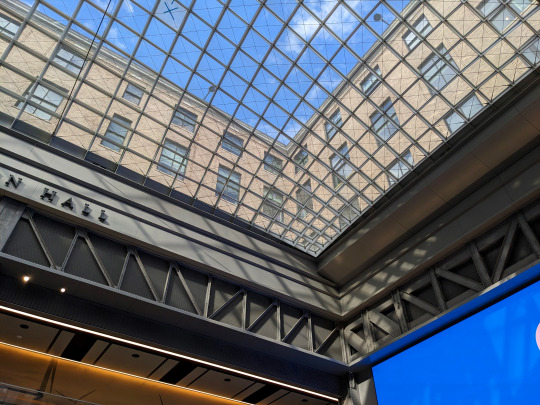


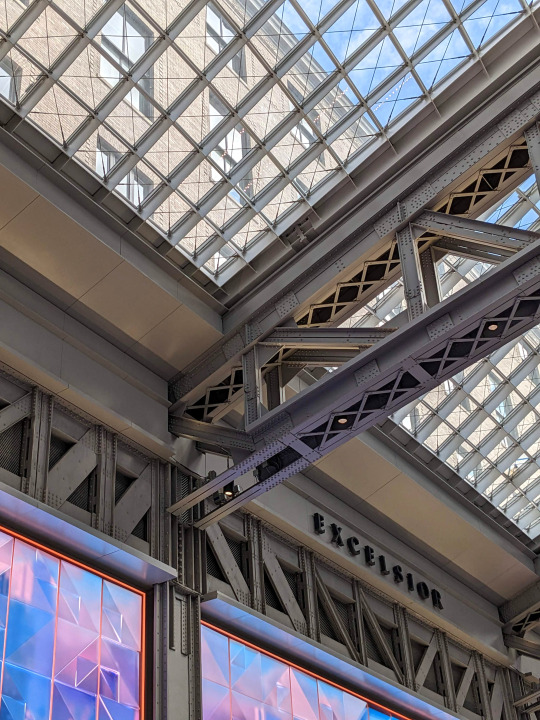

The Moynihan Train Hall by SOM in a building originally by McKim, Mead & White.
3 notes
·
View notes
Text
If you proposed it now, at any town council or city hall meeting, you would be laughed from the room. The concept is almost unthinkably indulgent, in our austere times: an institution, open for free to anyone, that sells no products, makes no money, is funded from public coffers, and is dedicated solely to the public interest, broadly defined. And it’s for books.
If the public library did not already exist as a pillar of local civic engagement in American towns and cities, there’s no way we would be able to create it. It seems like a relic of a bygone era of public optimism, a time when governments worked to value and edify their people, rather than punish and extract from them. In America, a country that can often be cruel to its citizens, the public library is a surprising kindness. It is institution that offers grace and sanctuary, and a vision of what our country might one day be.
To the eyes of a modern American, it can be a strange, even disorienting vision. For one thing, public libraries are unusually beautiful places, the kind of buildings that make you feel underdressed. In many American cities, the public library ranks among the most ornate and stately fixtures of downtown. They’re erected in early-20th century high style, like the Egyptian revival building at Los Angeles’ Riordan Central Library, or Boston’s neoclassical McKim building. Or sometimes they’re modern monuments to an ongoing investment in public services, like Seattle’s fantastic main branch, a gleaming structure in glass enmeshed in steel latticing.
How different these buildings are from the architecture of other American government buildings – from the flickering fluorescent hells of the DMV, or the windowless, prison-like encampment of many public schools. The only public buildings that rival our libraries in beauty are courthouses – but what happens in libraries is much nobler and less vulgar.
Over the past year, I began working in the public library for the first time in my freelance career, regularly making the subway commute from my apartment in Brooklyn to the 42nd Street flagship branch of the New York Public Library. No matter how often I went, every time I mounted the steps to the entrance, passing between the two famous marble lions – nicknamed Patience and Fortitude – that gaze out across Fifth Avenue, I was always a little nervous.
The building felt beyond my station, as if I was about to get caught doing something I shouldn’t. As I settled into my seat at a broad hardwood table and opened my laptop beneath the chandeliers, I always half expected a suited security guard to arrive and ask me politely but firmly to leave. But what is so precious and stupefying about the public library is that no one ever does. I have a right to be there – not because of any institutional affiliation or job or paid subscription, but because I’m a New Yorker, a regular person, in a city that has decided to honor its people with this place.
There are a lot of indignities to American city life, and maybe there are especially indignities to life in New York. There is the indignity of the crowded and dysfunctional subway system, where the cars are packed so tightly at rush hour that my face is regularly crammed into the armpit of a stranger just as the conductor comes over the speaker to tell us we’re being rerouted impossibly far from where I need to go. There is the indignity of the city’s dirtiness, where huge heaps of garbage emit nauseating smells in the summer, and where in winter the streets are filled with brown slush and puddles of mysterious liquid whose provenance you don’t want to know. There is the indignity of the price of rent.
But the public library offers an almost otherworldly dignity, a sense of purpose and seriousness that falls over you when you enter. The silence of the reading rooms begins to feel like the reverent hush of a temple.
The majesty of library buildings is matched only by the nobility of their purpose. The public library does not make anyone money; it does not understand its patrons as mere consumers, or as a revenue base. Instead, it aspires to encounter people as minds. The public library exists to grant access to information, to facilitate curiosity, education, and inquiry for their own sake. It is a place where the people can go to pursue their aspirations and their whims, to uncover histories or investigate new scientific discoveries.
And it is available, crucially, to everyone. It costs nothing to enter, nothing to borrow – in New York, and in many other cities, the public library system has even eliminated late fees. All the knowledge and artistry of its collection is available to the public at will, and it is a privilege made available, without prejudice, to rich and poor alike.
There’s nothing inevitable about this egalitarianism; it was perfectly possible that libraries could have remained permanent bastions of the elites, as they were before a wave of public and charitable investment – and democratic sentiment – established public libraries across America in the decades after the civil war. And the kind of dignified, edifying sanctuary for thought and curiosity that they provide could easily again become the sole provenance of the rich.
Library budgets are constantly being cut; in New York, Mayor Eric Adams has proposed draconian, multimillion-dollar year-over-year reductions to the public library system’s operating costs, the kind of drastic withdrawals of support that will inevitably force some locations to close.
But the optimism and respect for the people that is represented in the public library is worth taking into the future with us. The public library makes a proposition that’s still radical: that learning, knowledge and curiosity are for everyone, and that the annals of history, literature, science and art might not be just an indulgence of the privileged, but an entitlement of citizenship.
8 notes
·
View notes
Photo


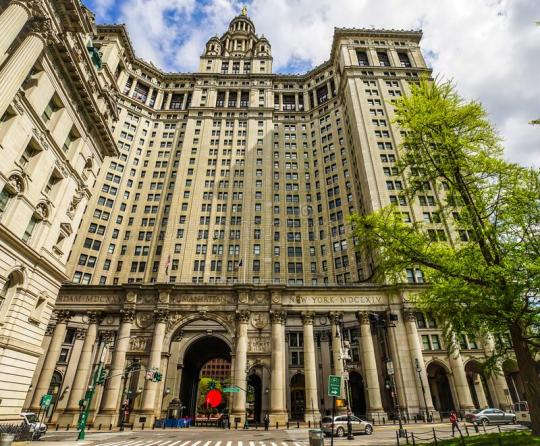


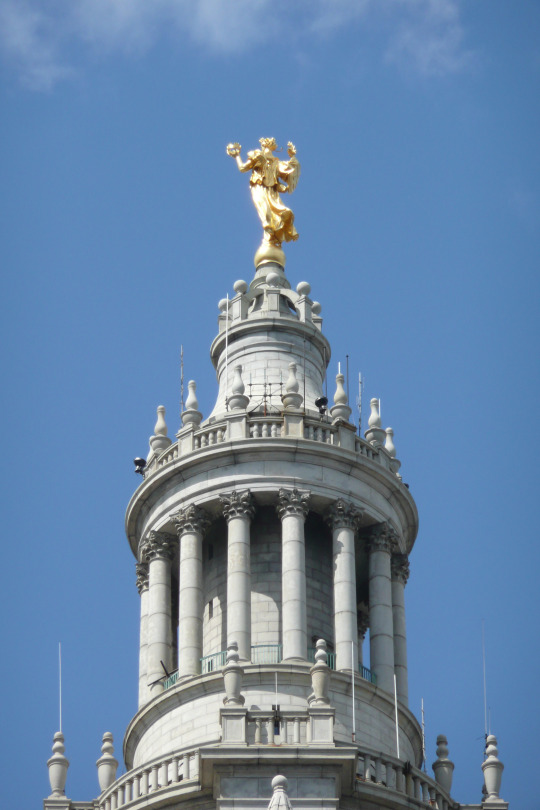
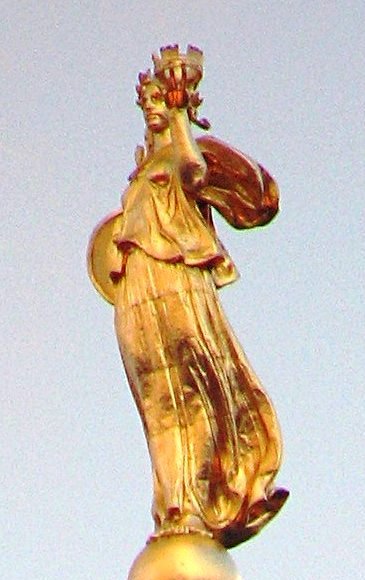


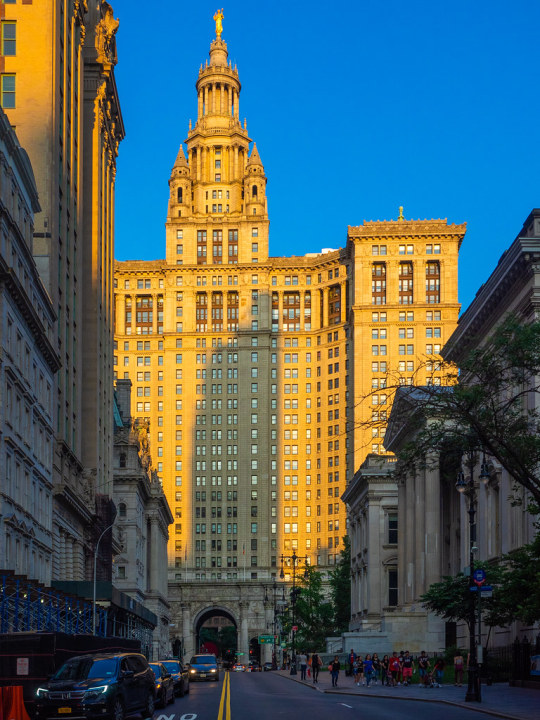
The David N. Dinkins Municipal Building (originally the Municipal Building and later known as the Manhattan Municipal Building) is a 40-story, 580-foot (180 m) building at 1 Centre Street, east of Chambers Street, in the Civic Center neighborhood of Manhattan in New York City. The structure was built to accommodate increased governmental space demands after the 1898 consolidation of the city's five boroughs. Construction began in 1909 and continued through 1914 at a total cost of $12 million (equivalent to $242,396,000 in 2021).
Designed by McKim, Mead & White, the Manhattan Municipal Building was among the last buildings erected as part of the City Beautiful movement in New York. Its architectural style has been characterized as Roman Imperial, Italian Renaissance, French Renaissance, or Beaux-Arts. The Municipal Building is one of the largest governmental buildings in the world, with about 1 million square feet (93,000 m2) of office space. The base incorporates a subway station, while the top includes the gilded Civic Fame statue. In one hand the statue holds a five-pronged crown, symbolizing the five boroughs of NYC.
The first offices in the Municipal Building were occupied by 1913. In later years, it received several renovations, including elevator replacements in the 1930s and restorations in the mid-1970s and the late 1980s. The New York City Landmarks Preservation Commission designated the building a landmark in 1966, and it was listed on the National Register of Historic Places in 1972.
#Manhattan#NYC#New York City#architecture#beaux arts#design#historic#David Dinkins Municipal Building#Municipal Building#Manhattan Municipal Building
3 notes
·
View notes
Text
Beautiful
Book: open heart (post series)
Pairing: Ethan Ramsey x Casey Valentine
Rating: General
Category: fluff
Warnings:
Summary: It is finally Casey and Ethan’s Wedding.
Disclaimer: Characters belong to Pixelberry
Authors note: Submission for @choicesmonthlychallengejune2022 prompts will be in bold.
———
15th April 2023.
Ethn awoke, he rolled over to his right but remembered the person he was looking for had not been there as she was in a different room on the next floor up. He was sad at first but then he remembered the date. Finally. It was his and Casey’s wedding day. It had been a journey to get here. But despite the resets, the self denial, his stubbornness, a vindictive former ceo and his vendetta they had arrived.
Meanwhile, the next floor up Casey awoke. She had slept surprisingly well given that she was excited and did not have Ethan beside her. In seven hours she would be walking down the aisle, towards the love of her life and declare what they knew was already true in their hearts, their undying love for each other. Sienna, Jackie and Aurora were her bridesmaids and they would be here soon to get ready. The wedding ceremony is to be held in the courtyard of the McKim building of the Boston Public Library with a sit down reception at one of the spaces of SoWa power station.
The morning went by in a flurry of activity for both Casey and Ethan. They had opted not to have a first look. Casey looked better than what she remembered in her gown. It was white, lace with floral design, skinny straps. The bridesmaids were in red.
Ethan, along with Tobias, Naveen and Casey’s brother Joel made their way to the venue. Joel was initially apprehensive about wearing his dress military uniform but Casey insisted and the other groomsmen were happy for him to do so. Ethan was starting to get nervous. He could not recall ever feeling this nervous and it was disconcerting. Two o’clock neared and Ethan took a calming breath. All the guests had arrived and they were just awaiting the bride. The limo bringing Michael, the bridesmaids and Casey arrived. Casey too was also nervous. Deep down she knew that he would be at the other end of the aisle but she was still nervous. Michael gave her a reassuring hug before the bridesmaids entered. The bridesmaids led by Sienna made their journey and it was time for Michael to walk Casey down the aisle. The string quartet played the opening chords of “All you need is love” and Ethan turned around. His breath was taken away. She was a vision in white and he could not recall a time where she was happier. Casey arrived and it was time to say their vows. They had opted to say their own vows.
“Rookie, Casey. Today I formally and publicly make the promise I make to myself daily to love you, respect you, to be your partner in all aspects of our daily life. You truly opened my eyes and my heart to joys that a loving relationship brings but more so I promise you that I will also be your strength when times get tough. Our relationship has survived my asininity, my cowardice and fears but more importantly, death tried and failed to part us. I promise to take for granted what we currently have and what I know we will build in our future.”
Ethan squeezes Casey’s Hands, wishing he could kiss her already. Casey took a deep breath.
“Ethan, one could argue that you changed my life eights years before we met. Thirteen years ago was when I first read your book and it was then that I decided to be a doctor. I was excited when I placed at Edenbrook. Our journey here has been long but if you told me after my first day that we would be here I would have laughed. As I got to know you better, the man that I envisioned after reading your book came through. Even though we have gone through plenty both together and apart, you have always remained true and steadfast. The downs we have had have not broken us but only made us stronger and I promise you today to remain steadfast and loyal to you and to our relationship and to be your biggest supporter as time goes on.”
The mouth to each other I love you while the officiant goes through the ring exchange. Finally they are wed. He kisses her deeply and passionately and picks her up and turns around. Casey is left breathless by the kiss.
They go for photos whilst the rest of the guests head to the reception venue for some cocktails before the dinner.
Ethan and Casey are the most at peace they have felt in a long time.
They enjoy their meal. There was a variety of chicken, lamb and seafood that was enjoyed by all. It was time for the speeches. Tobias was first. When Tobias was asked to be best man he was surprised, they had reconciled sure but it was still a surprise and he took his role seriously and it included his speech.
“ I met Ethan in 2003 at what we both agreed on that night as a saccharine mixer for first year Medical students. We were not friends straight away, in fact he tried to get away from me as quick as possible but that meeting lead to a friendship that I did eventually take for granted. Before I was a complete idiot however we did get to know each other quite well. Ethan was a man who had been through a lot in his life and that did shape much of his view on people and relationships. Him entering any relationship was something that he did not take lightly so I was not surprised that we were on the outer with each other for so long. There was one day though where many of my preconceptions changed, albeit it did take me too long to reconcile it. That was the day that I brought a team to Edenbrook and helped save two lives. It was on a walk to help me refocus that I saw through the window, our groom with Casey and I could tell that he was in love. An opportunity came for a career change that I took but I also decided that I would take the opportunity to mend some fences also. The more I got to know Casey and the more I got to re-establishing a relationship with Ethan, the more I came to realise how much of a changed man Ethan had become for the better. I know there was plenty external to our work that had happened that would test the strongest of relationships but instead of allowing it to put a wedge they both grew stronger not as individuals but as a couple. I always knew that it was going to be someone spectacular to be a lifelong partner for Ethan and Casey is certainly that. I admit I am possibly not the only one who thought they would never see this day but as much as I never thought I would see it, I am still so glad that it has happened because Ethan with Casey is by far my favourite Ethan. To Ethan and Casey.”Everyone raised their glasses to the married couple and Tobias and Ethan embraced.
The night went on without a hitch. They did their first dance to “Can’t help falling in love”. Eventually it was time for Casey and Ethan to leave for the night. Ethan was very much looking forward to consummating their marriage and so was Casey. Their wedding day had been everything they hoped it to be and the wedding night was equally as memorable also. When they came down from their multiple highs, Ethan quietly whispered “I love you Mrs Ramsey” and Casey whispered back “I love you too, Mr Ramsey.” As she cuddled into and spent their first night together as a married couple.
Authors note 2: spacing is horrible tonight so sorry for the big gaps. Also a picture of Casey in her wedding dress (not my face claim but it is the dress I saw when I envisioned it ages ago for a newlywed game with bree

#open heart#ethan ramsey#choices fanfic writers creations#choices monthly challenge#wedding#Mrs Ramsey
18 notes
·
View notes
Photo
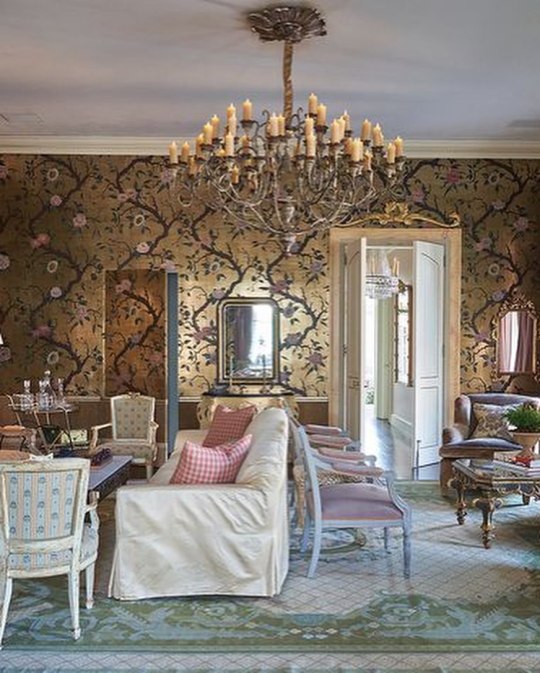
From my earliest days I’ve been drawn to historic places. Enchanted by their stories and mesmerized by the possibilities. Over the years Kurt and I have lived and restored numerous spots ranging from a humble earthquake cottage to a grand Victorian. Then as my world grew, so to did my desire to preserve these special places. In 2015 we purchased Saint Joseph’s a 1913 Romanesque Revival church and National Historic Landmark that had sat empty for 30 years and created @saintjosephsartsfoundation This was followed by the 1760’s Mary Heaton Vorse House now home to the @provincetownartssociety This passion to restore and revive was not limited to merely personal endeavors. Last year, with dear friends and clients, we opened @thequinhouseboston – a vibrant modern-day social club housed in a reimagined McKim, Meade & White building. Prior to that, a five year journey culminated in the opening of the @commodoreperryauberge It’s here, as a partner and Creative Director, that I met Clark Lyda @unreallyda and began the adventure to transform this passion into something greater. Together we purchased the intoxicatingly beautiful @soniathousehotel in New Orleans, followed by @blantyreresort a grande dame estate nestled in the Berkshire foothills. More recently we joined the legendary Margaret Grade as co-stewards of the beloved @mankaslodge – a magical kingdom in the Point Reyes National Seashore. Ahead lies the glamour of Old Hollywood and beyond that, a full-circle return to Austin and beyond. I often say I’m the luckiest man alive to get do what I love as an occupation. It’s truly my greatest privilege. I certainly have no pretense of leaving any sort of grand legacy but I do hope that I might contribute in a meaningful way by continuing to preserve what might otherwise be lost. Putting these incredible places back into service and building engaged communities to inhabit them. Thank you @wsjmag @wsj @kristina_oneill @jaycheshes for sharing the tale. Link in bio #staytuned https://www.instagram.com/p/CkyyWkBSUiF/?igshid=NGJjMDIxMWI=
2 notes
·
View notes
Text
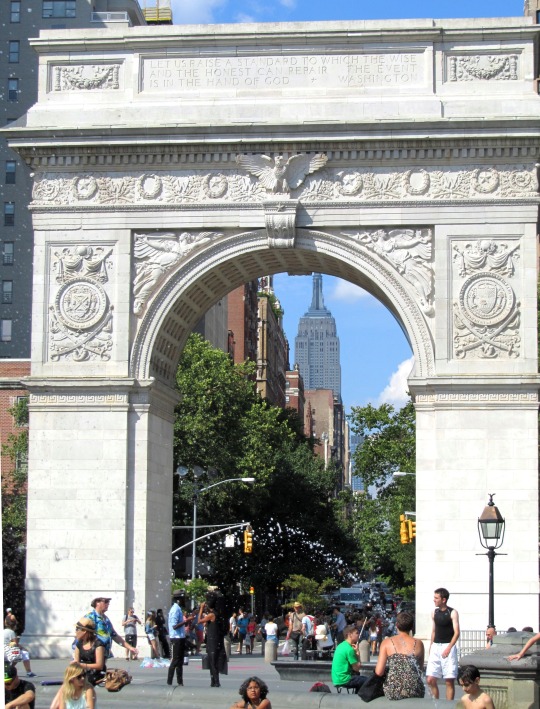




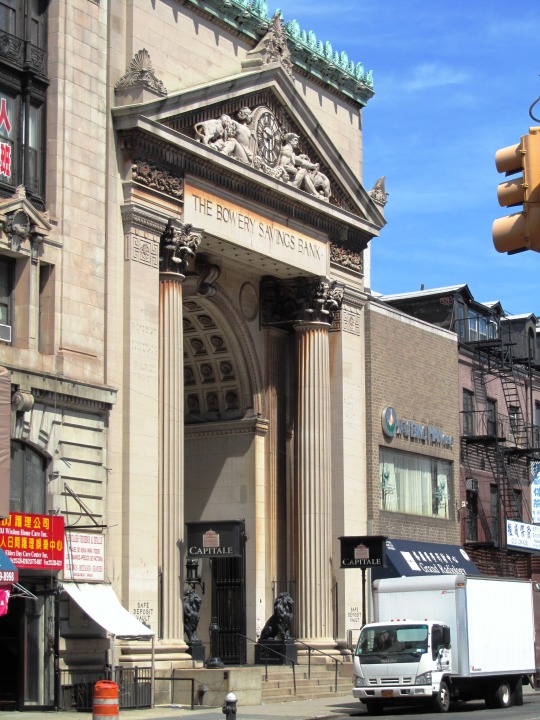

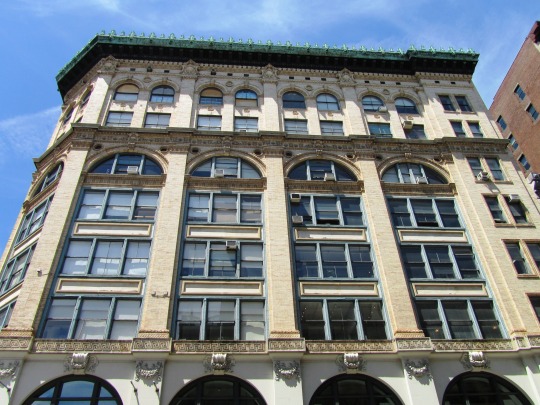
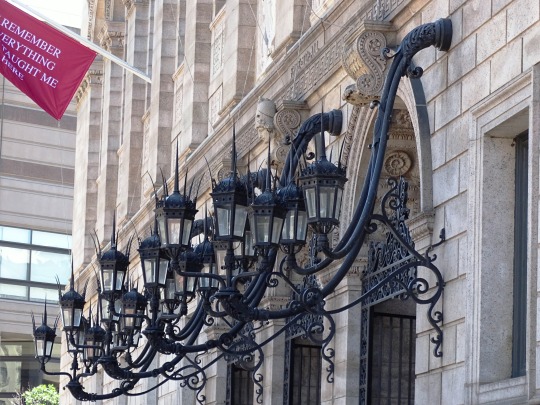
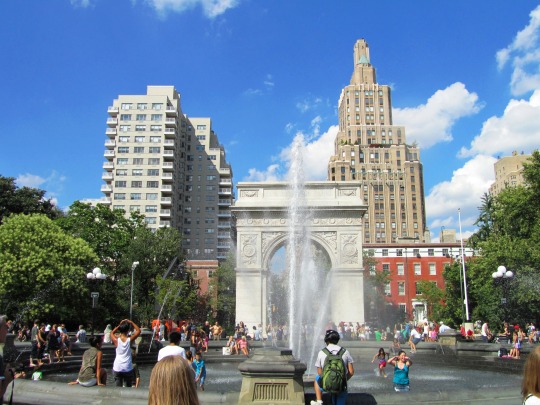


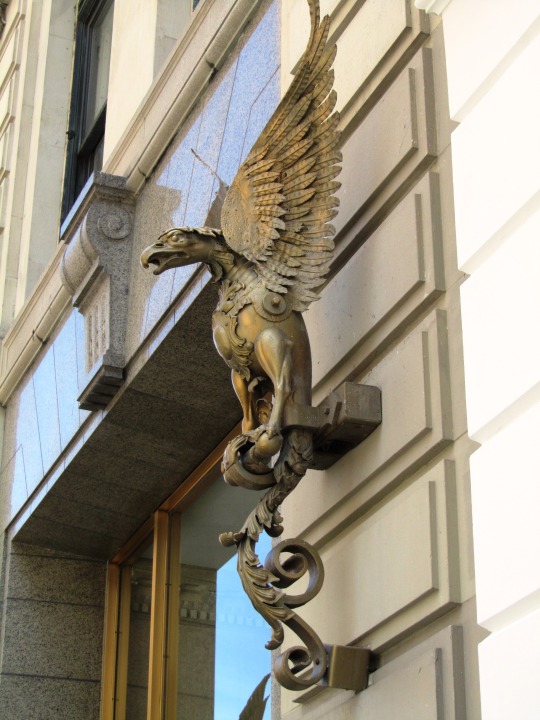
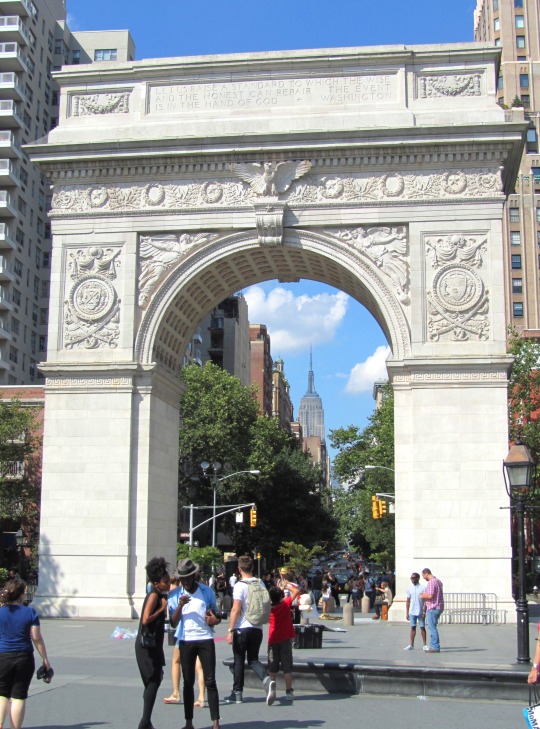


Millionaire Harry Thaw shot and killed prominent architect Stanford White in New York City on June 25, 1906.
#Washington Square Park#Washington Square Arch#Manhattan#New York City#summer 2013#Bowery Savings Bank#Cable Building#Boston#Massachusetts#2018#travel#original photography#vacation#tourist attraction#landmark#architecture#cityscape#McKim Building#Boston Public Library#Stanford White#killed#died#death#25 June 1906#anniversary#US history#USA
0 notes
Text
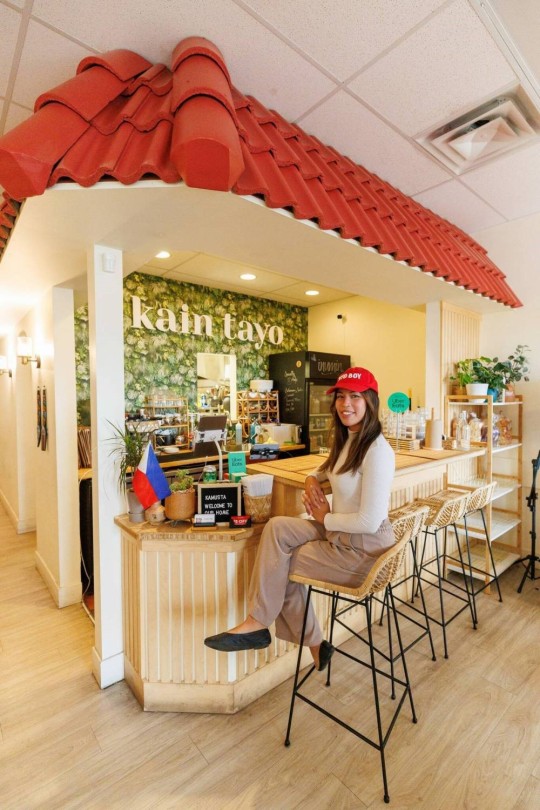
Join us on Friday, April 26, 2024 for a SPICY CreativeMornings Winnipeg Event at RRC Polytech's Jane's Restaurant.
This is a bonus event -- we are offering a pre-event "behind the scenes" exclusive tour of RRC Polytech's Culinary and Baking Labs at 7:30am followed by our usual amazing fare featuring speaker Jackie Wild at 8:15am. **ASL Interpretation is offered at both the pre-event and the main event.
THE VENUE: RRC POLYTECH PATERSON GLOBAL FOODS INSTITUTE (PGI)
Join us at RRC Polytech's Paterson Global Foods Institute (504 Main Street -- corner of Main and William in the Exchange District). There is plenty of street parking on King Street (behind the building by The CUBE) or a parking lot just south of the building (McKim Building on Hang Tag). You can enter by the front door on Main Street or at the back door off Bijou Park.
PRE-EVENT TOUR
Meet us at 7:30am at the security desk at the entrance to Jane's Restaurant for an exclusive "behind the scenes" tour of RRC Polytech's Culinary and Baking Labs. Explore your inner chef and imagine yourself as a professional baker on this special CM WPG tour!
MAIN EVENT
The Secret Sauce: Spice Up Your Life With Creativity, Culture and Community
Join us at 8:15am at Jane's Restaurant to explore the CreativeMornings global theme of SPICY, featuring speaker Jackie Wild.
As a young boy growing up in the rural farmlands of Southern Leyte, Jackie's father spent countless hours in the kitchen alongside his mother, cooking up tasty traditional Philippine dishes. Since immigrating to Canada in the 1980s, he dreamed of opening a restaurant where he could serve the same nostalgic meals from his homeland and childhood.
Over four decades later, Jackie turned this pipe dream into a reality by penning a business plan while on maternity leave from her career in the corporate sector. Taking a collective leap of faith, this father-daughter duo opened Tito Boy Restaurant's doors to their kababayan (fellow country people) and the broader community in October 2022.
As the first Philippine eatery in the south end of Winnipeg, Tito Boy's offers a safe, welcoming space for building intergenerational and intercultural connections. The purpose of this communal gathering place is not only about serving delicious food—it's about sharing and celebrating the lived experiences of our Philippine-Canadian diaspora.
Join us for engaging conversation and delightful bites with Jackie at the upcoming CreativeMornings session. During this talk, she will unpack the unconventional path that enabled her to unlock her creative potential and launch her own business.
About our Speaker: Jackie Wild
Jackie Wild | Founder, Tito Boy Restaurant & Founder, Delight Digital
Jackie Wild is a seasoned communications and marketing professional with over a decade of experience managing successful community-focused initiatives within the public, private and non-profit sectors. As a racialized woman in business, she understands the critical role anti-racism advocacy plays in advancing equitable outcomes for her kababayan (fellow country people) and the broader business community.
In 2022, Jackie launched Tito Boy Restaurant, Winnipeg's first south-end Philippine eatery, offering traditional and fusion culinary creations. The business, named after her father, Agustin "Tito Boy" Doming, represents the intersectionality of different generations and what it means to be a Philippine-Canadian in the modern era.
A champion of community building, Jackie serves as president of the Manitoba Filipino Business Council, leading their vision to serve as the prime community resource hub for Philippine business people and professionals. Jackie also volunteers as board secretary with the Manitoba Museum, small business advisory council co-chair with The Winnipeg Chamber, interview chair with the Loran Scholars Foundation and board member with the Health Sciences Centre Foundation.
In 2020, Jackie was named one of CBC Manitoba’s Future 40 recipients and featured in the Filipino Journal’s 20 Filipinos to Watch list.
APRIL CREATIVEMORNINGS THEME: SPICY

April’s Theme is SPICY.
When you’re cooking, spices add flavor, depth, and complexity to an otherwise plain culinary dish. Spicy foods interact with receptors in our mouth and can trigger sensations of heat and even pain. Can you handle it? Being open to trying new and bold tastes is a good lesson for bringing daring and originality into all of our creative endeavors. As they say, “variety is the spice of life.”
Our Tucson chapter chose this month’s exploration of SPICY and Sophie McTear illustrated the theme.
0 notes
Text
It Looks Like a Place for Observation
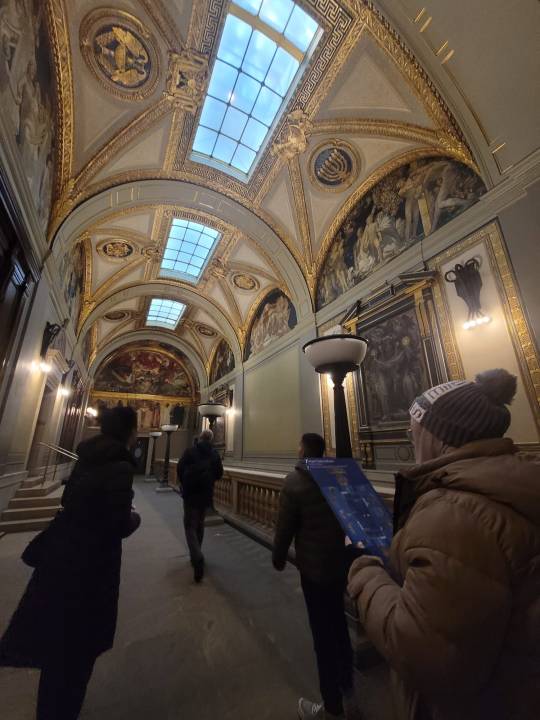

Intercultural competence is a skill that is able to connect people of different backgrounds and cultures by creating healthy environments that bridge the differences between cultures to attain many goals.
At our tour at the Boston Public Library, we learned that the library vowed to always make it Free to All by prioritizing the public's access to the library even when the renovations were taking place. We also observed a lot of the influences of the old library designed by McKim, Mead and White and its influences on the renovation of the Boylston Street Building. The firm placed a lot of importance on following the library's motto of Free to All by creating spaces for all types of people such as the Cafe, lecture halls, teen room, children's room, business library, the multicultural section, DVD and video section, and more. We were able to end our tour at the WGBH Radio Station where many people gathered around to listen to Mayor Michelle Wu!
The firm demonstrates a lot of attention to people and their needs and often communicate the different projects and challenges that they have faced with each other. The space is collaborative and encourages healthy communication that incorporates the opinions, advice, and ideas of people at all levels in the firm. As we sat in on a consultant meeting, we recognized the level of attention paid to the comfort of the occupants in the theatre in terms of the light, sound, maintenance and more.
1 note
·
View note
Text
the second exhibit i went to was at the boston public library (BPL) and was hosted by the levanthal map & education center in their exhibition room in the BPL's mckim building: Getting Around Town: Four Centuries of Mapping Boston in Transit.
this one really surprised me bc i wasn't expecting much but it was one of the best non-art exhibits i've ever seen. again, fantastically curated, just excellent use of space bc it's not a massive hall but they jam-packed it full of information. the exhibit was on the city of boston since its founding and how it's changed from founding to today, with a particular focus on the evolution of public transit and the various maps produced over the years in service of city planning and transit construction. excellent visualizations, cool interactive learning opportunities, another 100/10 exhibit, would highly recommend!
#a good chunk of it was also concerned with social justice and how to make the city a more equitable place and honestly just excellent stuff#all around
1 note
·
View note
Text
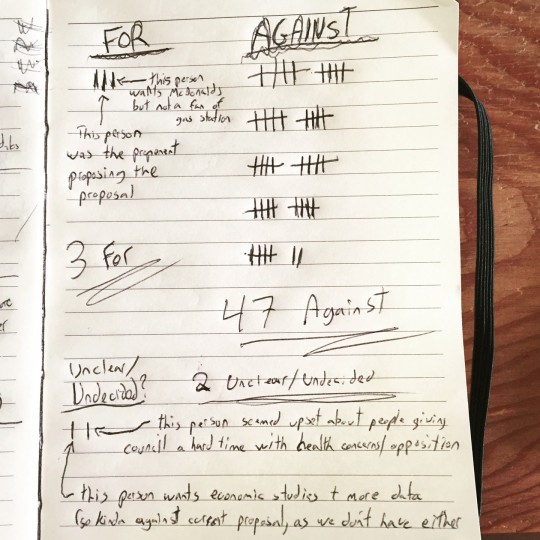
[28-06-2023]
I'm not one for public speaking, so I was chuffed to see that so many other locals were not only up to the task of stepping up to the mic at last night's Public Hearing at McKim — BUT — they also had intelligent, charming, thoughtful, & passionate things to say that hit a whole bunch of nails right on the head!
And when combined with all of the 'intelligent, charming, thoughtful, & passionate' written communications that have also been sent to council in regards to this specific proposal (not to mention the city's own staff reports and our town's OCP), it really does feel like the case to say "NO" has been made pretty loud & clear (to those listening).
Of course, there is still the phone-in hearing to be held tonight (June 28th) at 7pm + the public still has until 2pm today to send in any final written comments… so I would strongly encourage anyone feeling up for the task to get their voice/opinion added to the public record (as the accumulative public record of written comments + public hearing feedback is a powerful & useful thing to be able to refer back to until the final decision is made by the 7 people who vote on our behalf).
As far as I can tell, the video from last night's public hearing has not been shared yet, so I figured I would just share my notes — which is basically just a 'For vs Against' tally of all the speakers:
• Those who spoke AGAINST this proposal: 47
• Those who spoke FOR this proposal: 3 (and 1 of those people was the person proposing the proposal)
• And then 2 were undecided/unclear (although 1 undecided wanted more data/studies, which we don't have, so I think that technically would be 'against' the upcoming vote — the other 'unclear' seemed to say council was being given a hard time about things council shouldn't have to think about)
I would also say that the general vibe of the people who showed up at McKim was audibly AGAINST (I'm bad at estimating crowd size, but I'd say around 200-ish people??), although everyone was very respectful to all who spoke.
All in all… it was a mix of inspiring & encouraging and I hope it's an energy the community can build on for other challenges/concerns that we have to collectively face ✊
** UPDATE: the recording of last night's McKim public hearing has now been uploaded to the City of Kimberley youtube page — it's been split up into 6 videos, so I have put things into a playlist if you fancy watching one after the other.
0 notes